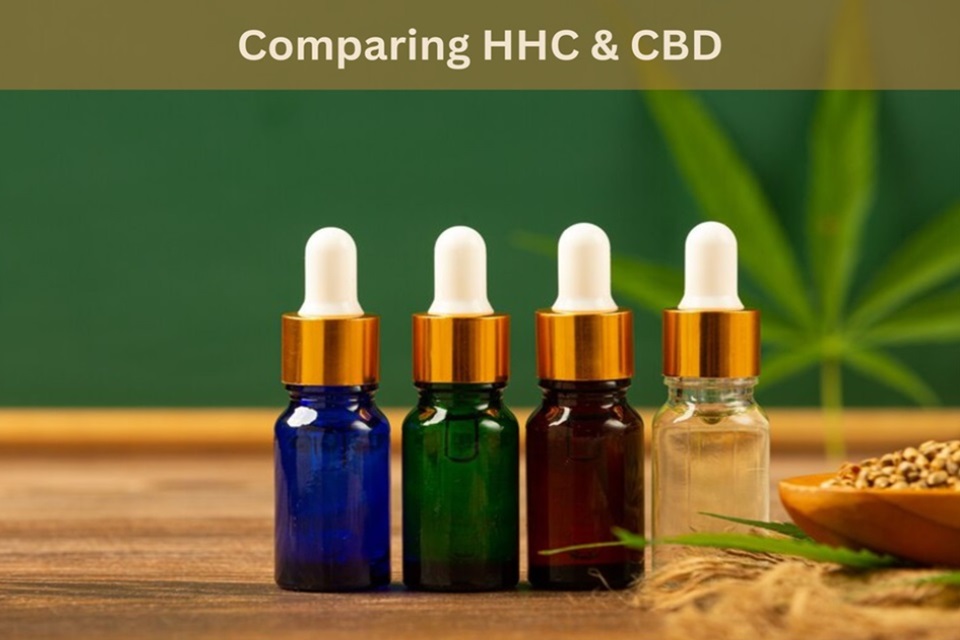Comparing HHC & CBD: Exploring Cannabis Trends In Vapes, Flowers, & Edibles
With the evolving landscape of cannabis products, consumers are encountering an array of options beyond traditional THC and CBD. Two compounds gaining attention are HHC (Hexahydrocannabinol) and CBD (Cannabidiol). Let’s delve into these trends across vape products, flowers, and edibles.
1. Understanding HHC & CBD
HHC: Hexahydrocannabinol is a cannabinoid similar to THC but with potentially milder psychoactive effects. It offers relaxation and euphoria, making it appealing to recreational users seeking a balanced experience.
CBD: Cannabidiol is renowned for its therapeutic properties without the psychoactive “high” associated with THC. CBD is popular for its potential health benefits, including relief from anxiety, pain, and inflammation.
2. Vape Products
HHC Vapes: Vape cartridges containing HHC are gaining popularity for their mild psychoactive effects and relaxation benefits. Users appreciate the euphoric sensation without excessive intoxication, making it suitable for daytime use.
CBD Vapes: CBD-infused vape products continue to be sought after for their potential therapeutic effects. Consumers utilize CBD vapes for relaxation, stress relief, and managing various health conditions.
3. Flowers
HHC Flowers: Cannabis flowers with elevated HHC levels offer an alternative to traditional THC-dominant strains. These flowers provide a balanced experience, combining the euphoria of THC with reduced intensity, appealing to users seeking a gentler high.
CBD Flowers: CBD-dominant strains remain popular among consumers seeking the therapeutic benefits of cannabis without significant psychoactive effects. CBD flowers offer relaxation and relief without impairing cognitive function.
4. Edibles
HHC Edibles: With the rise of HHC, edibles infused with this compound offer a discreet and convenient consumption method. HHC edibles provide a longer-lasting experience compared to vaping, making them appealing to users seeking sustained effects.
CBD Edibles: CBD-infused edibles continue to be favored for their versatility and precise dosing. From gummies to chocolates, CBD edibles offer a tasty way to experience the potential health benefits of cannabidiol.
Conclusion
As cannabis enthusiasts explore new trends and products, the emergence of compounds like HHC alongside the enduring popularity of CBD showcases the diverse offerings within the industry. Whether seeking relaxation, therapeutic relief, or a balanced experience, consumers can choose from a wide range of vape products, flowers, and edibles tailored to their preferences and needs. However, it’s essential to research and understand the effects of each compound to make informed choices and enjoy a safe and enjoyable cannabis experience.
FAQs
What is the difference between HHC and CBD?
HHC (Hexahydrocannabinol) is a cannabinoid similar to THC, offering mild psychoactive effects, while CBD (Cannabidiol) is non-intoxicating and renowned for its therapeutic properties. HHC provides a balanced high, whereas CBD offers relaxation without the “high” associated with THC.
Are HHC and CBD legal?
The legality of HHC and CBD varies depending on jurisdiction. CBD derived from hemp with less than 0.3% THC is federally legal in the United States, while HHC’s legal status may differ. It’s crucial to check local regulations before purchasing or using products containing these compounds.
What are the benefits of HHC and CBD in cannabis products?
HHC may provide relaxation and euphoria with milder psychoactive effects, appealing to users seeking a balanced high. CBD offers potential therapeutic benefits, including relief from anxiety, pain, inflammation, and other health conditions, without the intoxicating effects of THC.
How do I choose between HHC and CBD products?
The choice between HHC and CBD products depends on individual preferences and desired effects. If seeking a balanced high with mild psychoactive effects, HHC products may be suitable. For therapeutic relief without intoxication, CBD products are preferred. Consider factors such as intended use, potency, and personal tolerance when making a decision.





